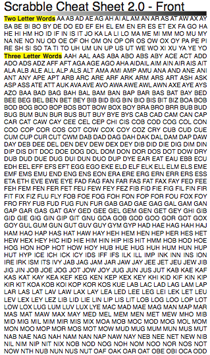
GitHub - abdullah-ch/Git-Cheat-Sheet: A Cheat Sheet which covers commands which do most of the work you want to do with git. Git commandline cheat-sheet. GitHub Gist: instantly share code, notes, and snippets. Git Cheat Sheet Create From existing repo From existing data cd /projects/myproject git init git add. Git clone /existing/repo /new/repo git clone git://host.org. GitHub offers the same distributed version control and source code management features found in Git and even adds more to the mix with bug tracking, feature requests, task management, access.
Cheat sheets can be really helpful when you’re trying a set of exercises related to a specific topic, or working on a project. Because you can only fit so much information on a single sheet of paper, most cheat sheets are a simple listing of syntax rules. This set of cheat sheets aims to remind you of syntax rules, but also remind you of important concepts as well. You can click here and download all of the original sheets in a single document.
A more recently updated version of these sheets (April 2021) is available through Leanpub. The updated version includes a sheet that focuses on Git basics, a printer-friendly b&w version of each sheet, and each sheet as a separate document. There is an option to download the fully updated set at no cost.
If you’d like to know when more resources become available, you can sign up for email notifications here.

Github Git Cheat Sheet Pdf
Overview Sheet
- Beginner’s Python Cheat Sheet
- Provides an overview of the basics of Python including variables, lists, dictionaries, functions, classes, and more.
Python Basics
- Beginner’s Python Cheat Sheet - Lists
- Focuses on lists: how to build and modify a list, access elements from a list, and loop through the values in a list. Also covers numerical lists, list comprehensions, tuples, and more.
- Beginner’s Python Cheat Sheet - Dictionaries
- Focuses on dictionaries: how to build and modify a dictionary, access the information in a dictionary, and loop through dictionaries in a variety of ways. Includes sections on nesting lists and dictionaries, using dictionary comprehensions, and more.
- Beginner’s Python Cheat Sheet - If Statements and While Loops
- Focuses on if statements and while loops: how to write conditional tests with strings and numerical data, how to write simple and complex if statements, and how to accept user input. Also covers a variety of approaches to using while loops.
- Beginner’s Python Cheat Sheet - Functions
- Focuses on functions: how to define a function and how to pass information to a function. Covers positional and keyword arguments, return values, passing lists, using modules, and more
- Beginner’s Python Cheat Sheet - Classes
- Focuses on classes: how to define and use a class. Covers attributes and methods, inheritance and importing, and more.
- Beginner’s Python Cheat Sheet - Files and Exceptions
- Focuses on working with files, and using exceptions to handle errors that might arise as your programs run. Covers reading and writing to files, try-except-else blocks, and storing data using the json module.
- Beginner’s Python Cheat Sheet - Testing Your Code
- Focuses on unit tests and test cases. How to test a function, and how to test a class.
Project-Focused Sheets
- Beginner’s Python Cheat Sheet - Pygame
- Focuses on creating games with Pygame. Creating a game window, rect objects, images, responding to keyboard and mouse input, groups, detecting collisions between game elements, and rendering text
- Beginner’s Python Cheat Sheet - Matplotlib
- Focuses on creating visualizations with Matplotlib. Making line graphs and scatter plots, customizing plots, making multiple plots, and working with time-based data.
- Beginner’s Python Cheat Sheet - Plotly
- Focuses on creating visualizations with Plotly. Making line graphs, scatter plots, and bar graphs, styling plots, making multiple plots, and working with geographical datasets.
- Beginner’s Python Cheat Sheet - Django
- Focuses on creating web apps with Django. Installing Django and starting a project, working with models, building a home page, using templates, using data, and making user accounts.
If you find any errors, please feel free to get in touch:
Email: ehmatthes@gmail.com Overcooked! 2 crack.
Twitter: @ehmatthes
The Git version control system (VCS) is an essential link in most developers’ toolchains. Created by Linus Torvalds in 2005 (to manage the source code for the Linux kernel), Git is now the predominant VCS for development projects and organizations worldwide. Originally intended as a low-level source control engine (on which higher-level VCSs could be built), Git now includes functionality that addresses a wide variety of high- and low-level use cases. Nonetheless, most individual developers use a fairly small subset of its features on a day-to-day basis. Attached are a set of Git “cheat sheets”, published by the 3 main Git host services/vendors (GitHub, GitLab, Atlassian), providing quick references for the most commonly used commands and options.
I learned from Parallels forum that the problem was caused by version check of Parallels. The solution is first set the environment variable 'SYSTEMVERSIONCOMPAT=1', and then use command 'open -a 'Parallels Desktop' ' in terminal to run PD. Now PD15 can start. To address your issue, Parallels Desktop isn't working on the developer beta and Parallels needs to update it to support Big Sur. There is likely no mitigation or way to fix your problem until Parallels updates their software or you downgrade to a stable (at least as far as Apple is concerned) version of macOS, which in your case would be macOS 10.15.5 Catalina. KB Parallels: Install macOS Big Sur in a virtual machine with ....
Github Git Cheat Sheet For Beginners
Attachments
Github Search Cheat Sheet
References
